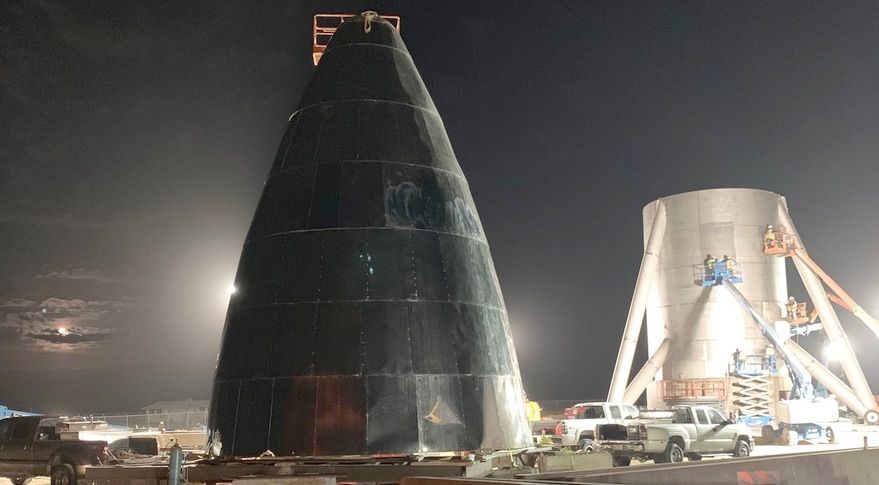SSPI approach: • Enabling technologies developed at Caltech • Ultra-light deployable space structures • High efficiency ultra-light photovoltaic (PV) • Phased Array and Power Transmission • Integration of concentrating PV, radiators, MW power conversion and antennas in single cell unit • Localized electronics and control for system robustness, electronic beam steering • Identical spacecraft flying in formation • Target is specific power over 2000 Watts per kilogram. This would cost competitive with ground-based power.
Category: space travel – Page 412


SpaceX’s Crew Dragon heat shield shown off after first orbital-velocity reentry
Following SpaceX’s successful debut launch, rendezvous, and recovery of Crew Dragon, NASA has published official photos documenting the scorched spacecraft’s Atlantic Ocean splashdown, GO Searcher’s recovery, and the duo’s return to Port Canaveral shortly thereafter.
Aside from offering a number of spectacularly detailed views of Crew Dragon after its inaugural orbital reentry, NASA’s photos also provide an exceptionally rare glimpse of the spacecraft’s PICA-X v3 heat shield, revealing a tiled layout that is quite a bit different from Cargo Dragon’s own shield. A step further, CEO Elon Musk offered updates on March 17th about progress being made towards a new, metallic heat shield technology meant to make ablative shields like those on Dragon outdated, serving as a striking bit of contrast to SpaceX’s newest spacecraft, potentially just a dozen or two months away from already becoming anachronistic.


Physicists reverse time using quantum computer
Researchers from the Moscow Institute of Physics and Technology teamed up with colleagues from the U.S. and Switzerland and returned the state of a quantum computer a fraction of a second into the past. They also calculated the probability that an electron in empty interstellar space will spontaneously travel back into its recent past. The study is published in Scientific Reports.
“This is one in a series of papers on the possibility of violating the second law of thermodynamics. That law is closely related to the notion of the arrow of time that posits the one-way direction of time from the past to the future,” said the study’s lead author Gordey Lesovik, who heads the Laboratory of the Physics of Quantum Information Technology at MIPT.
“We began by describing a so-called local perpetual motion machine of the second kind. Then, in December, we published a paper that discusses the violation of the second law via a device called a Maxwell’s demon,” Lesovik said. “The most recent paper approaches the same problem from a third angle: We have artificially created a state that evolves in a direction opposite to that of the thermodynamic arrow of time.”

Spaceflight found to reactivate dormant viruses in astronauts
There are certainly a whole host of technological hurdles to overcome before humans successfully travel to Mars, or beyond, but research is also pointing to a growing assortment of fundamental health challenges that astronauts may face from long stretches of time in space. A recent NASA-funded study has found dormant viruses can reactivate in the human body during spaceflight, presenting yet another physiological problem for scientists to solve before we journey out into deep space.

SpaceX’s Crew Dragon Launch Could Make Space Hotels A Reality
With the successful launch and docking of its Crew Dragon spacecraft under its belt – although it still has to stick the landing – SpaceX could soon be launching humans to a number of exciting orbital destinations. And, yes, that includes space hotels.

10 Space Science Stories
Humanity will get its first good look at Ceres and Pluto, giving us science writers some new pics to use instead of the same half dozen blurry dots and artist’s conceptions. SpaceX will also attempt a daring landing on a sea platform, and long duration missions aboard the International Space Station will get underway. And key technology headed to space and on Earth may lead the way to opening up the window of gravitational wave astronomy on the universe. Here’s 10 sure-fire bets to watch for in the coming year from Universe Today:
1. LISA Pathfinder
A precursor to a full-fledged gravitational wave detector in space, LISA Pathfinder will be launching atop a Vega rocket from Kourou, French Guiana in July 2015. LISA stands for the Laser Interferometer Space Antenna, and the Pathfinder mission will journey to the L1 Lagrange point between the Earth and the Sun to test key technologies. LISA Pathfinder will pave the way for the full fledged LISA space platform, a series of three free flying spacecraft proposed for launch in the 2030s.

Lockheed Martin’s Compact Fusion Reactor Might Change Humanity Forever
This is an invention that might possibly modify the civilization as we know it: A compact fusion reactor presented by Skunk Works, the stealth experimental technology section of Lockheed Martin. It’s about the size of a jet engine and it can power airplanes, most likely spaceships, and cities. Skunk Works state that it will be operational in 10 years.
